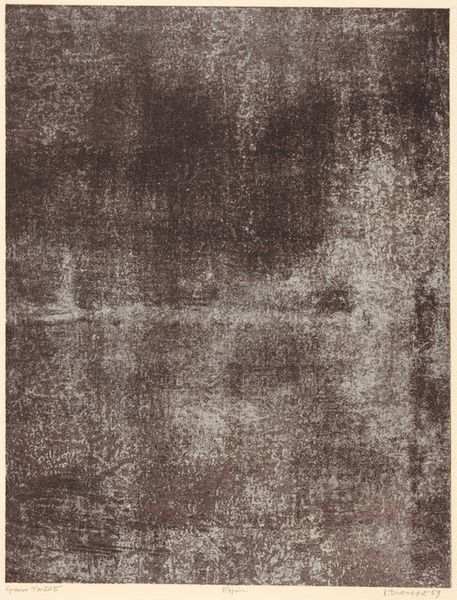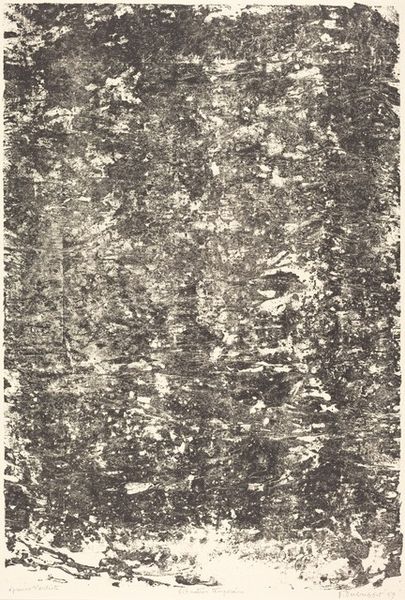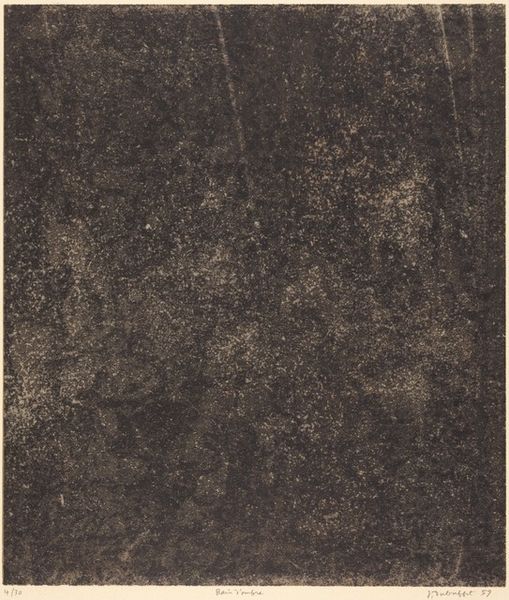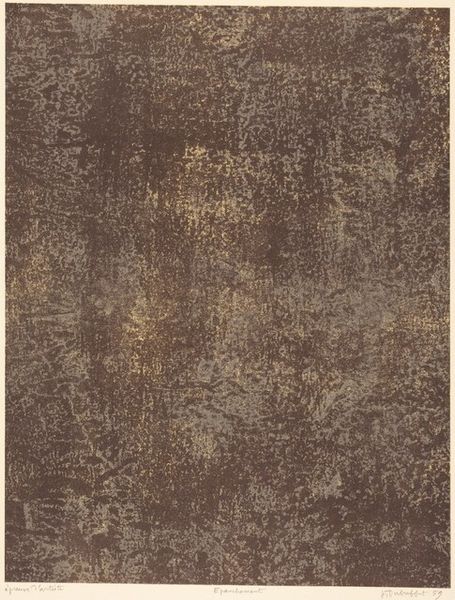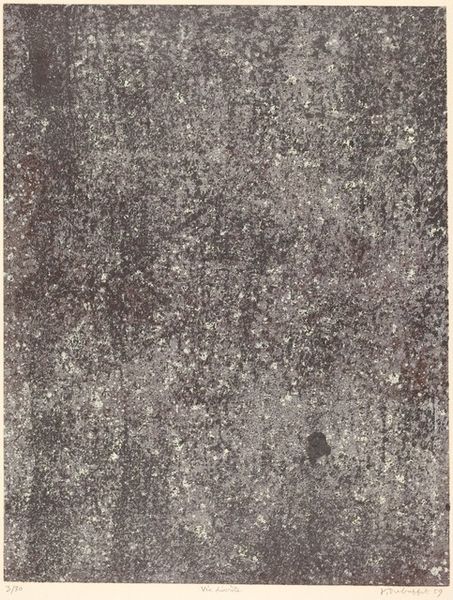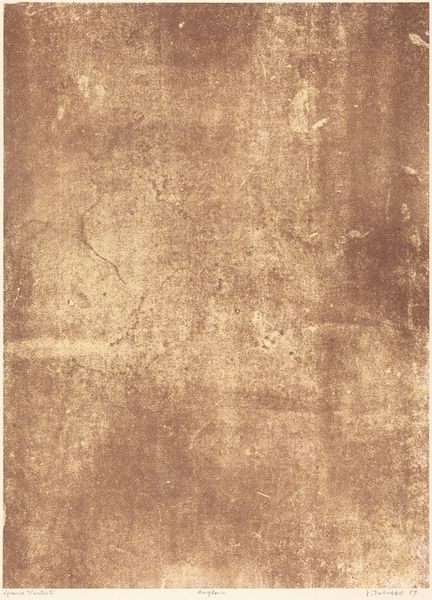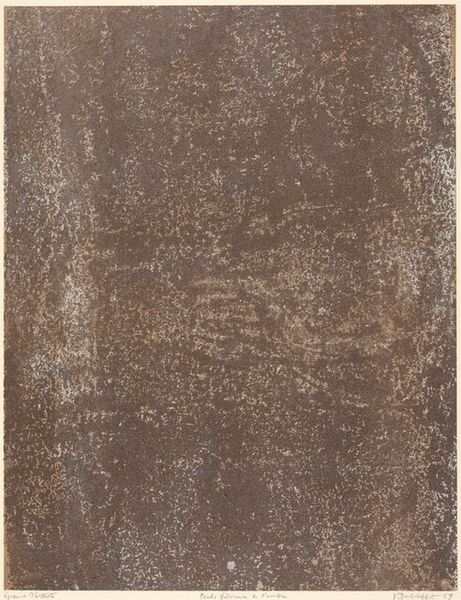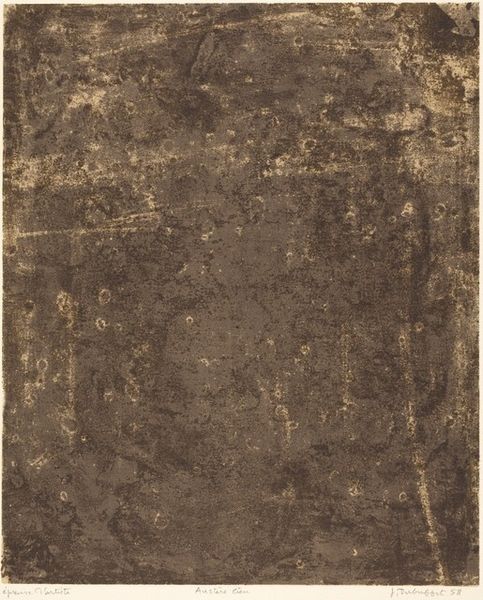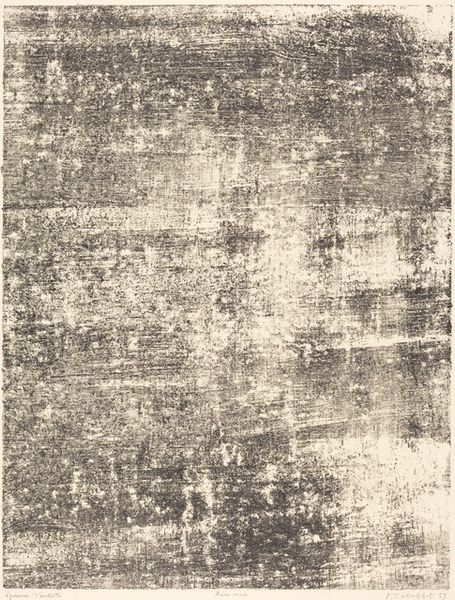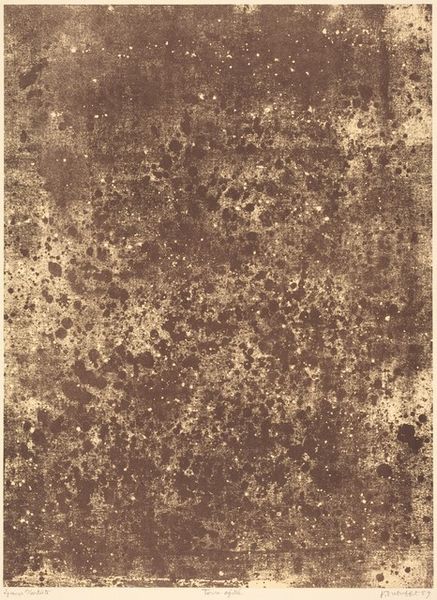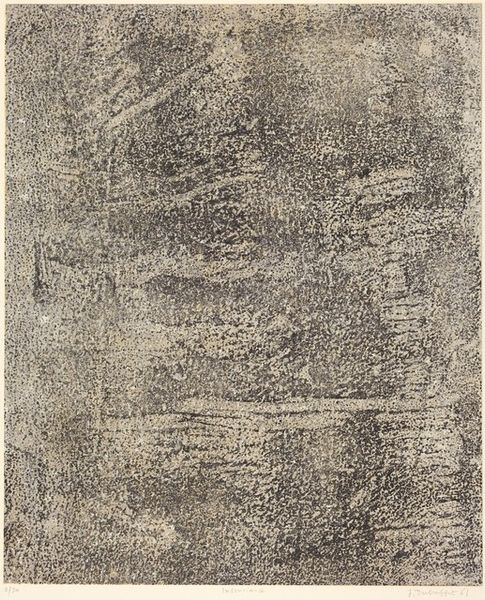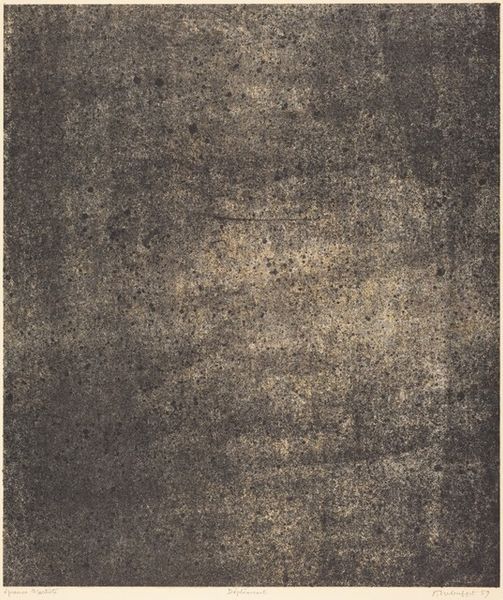
print, etching
# print
#
etching
#
art-informel
#
matter-painting
#
abstraction
Copyright: National Gallery of Art: CC0 1.0
Curator: This piece, titled "Graces tenebreuses," is a 1959 etching by Jean Dubuffet, part of his exploration into Art Informel and what some call "matter painting." It's really a captivating print to consider. Editor: "Captivating" is one word. My immediate reaction is, frankly, gloom. A landscape of urban decay maybe? The grayscale just swallows any hint of light, doesn't it? It's almost oppressive. Curator: I can see that, the shades certainly are brooding. But for Dubuffet, the gloom isn’t an end in itself. He's after something raw, something primal. He saw beauty, a dark kind of grace, in the discarded, the rough. This aesthetic certainly breaks with conventions. Editor: And subverts the myth of the "three graces", idealized figures, benevolent deities that represented beauty, charm, and joy. Interesting... but is this deconstruction truly "beautiful?" Curator: The beauty emerges from the materiality, for me, anyway. The texture—the way the etching bites into the paper —creates a topography. The process itself feels as important as any representational content, it’s about unveiling what others ignore. It is not conventional beauty by any means! Editor: I think there’s something potent here, too, regarding the post-war anxiety embedded in works such as these, perhaps mirroring the unsettling and precarious conditions of human existence in the nuclear age. Art Informel was, after all, developed as a reaction to abstract forms... it has some significance that's clearly there. Curator: Precisely! It feels intensely physical. Dubuffet wanted to push back against a society that idealized perfection. He insisted that beauty resided in the grit, the scars, the unpredictable textures of the real. He sought the unconventional in every aspect, really. Editor: And I think he achieved that! Considering all, and understanding better the context of that time, and of this artistic expression, I see that "Graces tenebreuses" offers us a very valid space for thoughtful consideration. It certainly resonates through decades. Curator: Absolutely, there's a lot to unpack with his view of the human condition, a beautiful unease, let's call it that. It surely has made its impact in contemporary arts and theory!
Comments
No comments
Be the first to comment and join the conversation on the ultimate creative platform.
